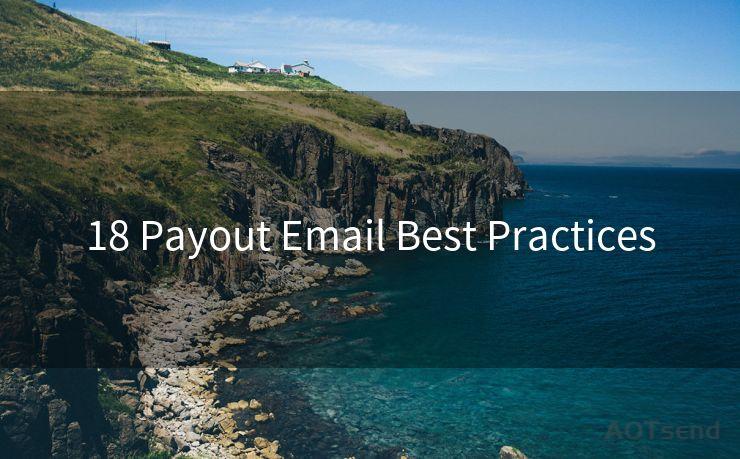18 Payout Email Best Practices




When it comes to payout emails, clarity and professionalism are paramount. These emails inform recipients about financial transactions, making it crucial to follow best practices for accuracy and transparency. Here are 18 best practices for crafting effective payout emails.
1. Clear Subject Line
Start with a subject line that clearly states the purpose of the email, such as "Your Recent Payout Information." This helps recipients understand the email's content at a glance.
2. Professional Greeting
Begin the email with a professional greeting, addressing the recipient by name if possible. This personal touch establishes a friendly yet professional tone.
3. Detailed Payout Summary
Provide a comprehensive summary of the payout, including the amount, date, and any relevant transaction details. Use tables or lists to organize this information for clarity.
4. Explanation of Payout
Explain the reason for the payout, whether it's for services rendered, a refund, or another transaction. This context helps recipients understand the payment.
5. Link to Transaction History
Include a link to the recipient's transaction history, allowing them to view all their past transactions in one place. This enhances transparency and builds trust.
6. Tax Information
If applicable, include tax-related information or links to resources that explain tax implications of the payout.
7. Clear Call to Action
If there's a specific action the recipient needs to take, such as confirming receipt or updating account information, make it clear and provide instructions.
8. Contact Information
Always include a way for recipients to reach out with questions or concerns. Provide an email address, phone number, or link to a support page.
9. Security Reminders
Remind recipients to keep their account information secure and to be cautious of phishing emails or scams.
10. Privacy Policy Link
Include a link to your privacy policy, reassuring recipients that their personal and financial information is protected.
11. Unsubscribe Option
Offer an unsubscribe option for those who no longer wish to receive payout emails, as per email marketing best practices.
12. Mobile-Friendly Design

Ensure your email is mobile-friendly, as many users check their emails on smartphones or tablets.
13. Avoid Spam Filters
Use appropriate language and avoid excessive use of capital letters, exclamation points, or other elements that might trigger spam filters.
14. Proofread and Test
Always proofread your emails for grammar and spelling errors, and test them across multiple email clients to ensure compatibility.
15. Brand Consistency
Maintain brand consistency by using your company's logo, colors, and font styles in the email template.
16. Simplicity in Design
Keep the email design clean and simple, avoiding clutter and focusing on the essential information.
17. Timely Delivery
Send payout emails promptly after the transaction is completed to keep recipients informed in a timely manner.
18. Follow-Up Communication
🔔🔔🔔
【AOTsend Email API】:AOTsend is a Managed Email Service for sending transactional emails. Support Email Types: reminders, authentication, confirmations, notifications, verification codes, invoices, password resets, account activations, billing statements, two-factor authentication (2FA), and one-time passwords (OTP) emails, etc. $0.28 per 1000 Emails. 99% Delivery, 98% Inbox Rate.
You might be interested in:
Why did we start the AOTsend project, Brand Story?
What is a Managed Email API, How it Works?
Best 25+ Email Marketing Platforms (Authority,Keywords&Traffic Comparison)
Best 24+ Email Marketing Service (Price, Pros&Cons Comparison)
Email APIs vs SMTP: How they Works, Any Difference?
Consider sending a follow-up email a few days later to check if the recipient has any questions or needs further assistance.
By following these 18 best practices, you can create payout emails that are clear, professional, and effective at communicating important financial information to your recipients. Remember to prioritize clarity, security, and customer service in every message you send.




Scan the QR code to access on your mobile device.
Copyright notice: This article is published by AotSend. Reproduction requires attribution.
Article Link:https://www.mailwot.com/p6070.html



